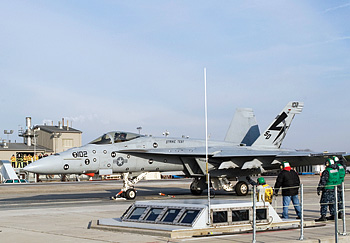INDIAN ARMED FORCES CHIEFS ON
OUR RELENTLESS AND FOCUSED PUBLISHING EFFORTS

SP Guide Publications puts forth a well compiled articulation of issues, pursuits and accomplishments of the Indian Army, over the years

I am confident that SP Guide Publications would continue to inform, inspire and influence.

My compliments to SP Guide Publications for informative and credible reportage on contemporary aerospace issues over the past six decades.
First
Go Electromagnetic

The US Navy launches first aircraft using electromagnetic aircraft launch system technology
The US Navy has made history with the launch of the first aircraft from the Naval Air systems Command (NAVAIR), test site using the electromagnetic aircraft launch system or electromagnetic aircraft launch system (EMALS) technology. The Navy has been using steam for more than 50 years to launch aircraft from carriers. The aircraft launch and recovery equipment (ALRE) programme launched an F/A-18E Super Hornet using the EMALS technology, which will replace steam catapults on future aircraft carriers. EMALS is a complete carrierbased launch system designed for Gerald R. Ford and future Ford-class carriers.
The F/A-18 Super Hornet, piloted by Lt Daniel Radocaj, was launched from Naval Air systems Command, Lakehurst, New Jersey. For more than 50 years, the Navy has been using steam catapults to launch its aircraft. EMALS will replace steam catapults on future aircraft carriers.
According to a Navy paper on EMALS, steam catapults are large, heavy, operate without feedback control and impart large transient loads to the airframe (damaging or reducing its life). An electromagnetic launch system will lead to substantial improvements, including reduced weight, volume and maintenance; and increased controllability, availability, reliability and efficiency.





